Guide to Baseball Field Grass
Regarding ‘Baseball Field Grass,’ there’s more to this verdant carpet than meets the eye. As someone who’s spent countless afternoons on the diamond, I’ve come to appreciate the nuances of this essential playing surface. Here’s what I’ve learned about maintaining the perfect diamond turf:
Key Characteristics
- Durability: The grass must withstand the weight of players and the impact of cleats. Look for varieties that can handle foot traffic.
- Texture: A soft, lush feel enhances the player experience. Players should feel confident sliding into bases without fear of abrasions.
- Color: A vibrant green not only looks appealing but also indicates healthy growth. Bright grass can make your field stand out.
Maintenance Tips
- Mowing: Keep the grass at an optimal height, typically around 2.5 to 3 inches. Regular mowing promotes thick growth.
- Aeration: This process allows air, water, and nutrients to penetrate the soil. I’ve found that aerating at least once a year is essential for preventing compaction.
- Fertilization: A well-timed fertilization schedule, especially in the spring and fall, can work wonders. Look for slow-release fertilizers to nourish your grass gradually.
- Watering: Deep watering is key. I’ve learned that soaking the field early in the morning helps roots grow deeper and more robust.
- Weed Control: Be proactive! Use pre-emergent herbicides to keep pesky weeds at bay, and don’t forget to address any that do appear promptly.
Understanding these elements will not only improve the playing conditions but also enhance your overall love for the game. With proper care, your baseball outfield grass can be a lush and inviting arena for players to shine!
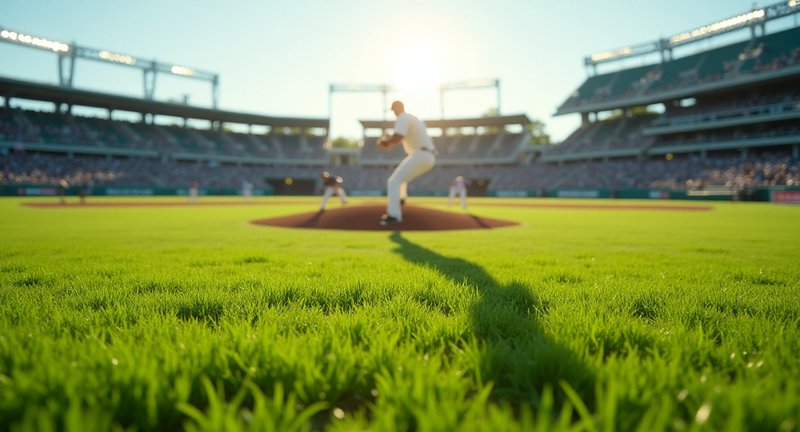
The Importance of Baseball Field Grass
When I step onto a baseball diamond, the lush carpet underfoot instantly connects me to the heart of the game. The surface where players dive, slide, and sprint is more than just ground; it plays a crucial role in the experience of both athletes and fans. Here’s why this verdant foundation matters so much:
-
Player Performance: The right turf allows for optimal speed and traction. Have you ever seen a player slip while rounding a base? That’s not just bad luck; it can stem from uneven or poorly maintained ground. A well-kept surface provides stability, reducing the risk of injuries.
-
Aesthetic Appeal: There’s something magical about the sight of a perfectly manicured field, isn’t there? The vibrant green against the backdrop of a blue sky creates an inviting atmosphere that enhances the overall experience. It’s the ideal canvas for those iconic moments in the game.
-
Environmental Benefits: Believe it or not, a healthy expanse of greenery contributes to the local ecosystem. It helps with air quality and provides a habitat for small creatures. Plus, it can cool the area, making those hot summer games a bit more bearable for everyone involved.
-
Maintenance Matters: Just like any relationship, keeping this greenery thriving requires attention. Regular mowing, watering, and aeration are essential to prevent issues that can affect playability.
So, the next time you find yourself at a game, take a moment to appreciate this essential element. It’s not just about the players or the action; it’s about the very ground they play on.
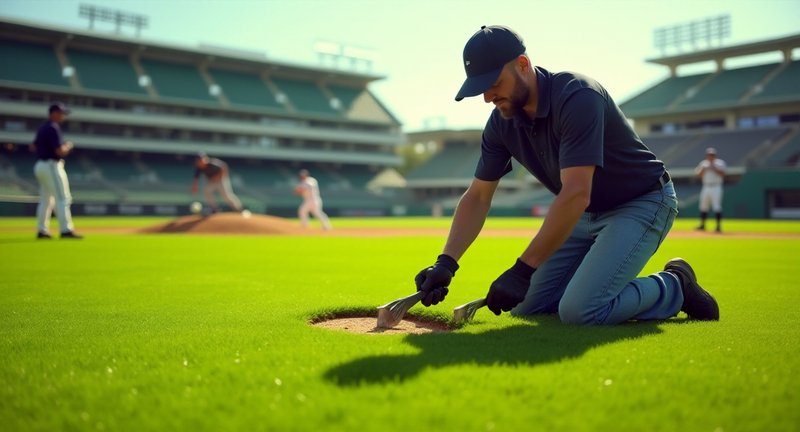
Understanding the Importance of Field Turf
When I first stepped onto a field with artificial turf, I was struck by how much it transformed the game. Field turf isn’t just about looks; it has a profound impact on playability and athlete performance. Here’s why I believe it’s essential for any sporting venue:
-
Consistency: Unlike natural grass, which can vary with weather and maintenance, field turf provides a uniform surface. This means fewer unpredictable bounces and a smoother experience for athletes, allowing them to showcase their skills without worrying about unexpected obstacles.
-
Durability: Whether it’s a sweltering summer or a pouring rainstorm, field turf stands strong. This resilience ensures that games can go on without delay, reducing the frustration of postponed matches. Plus, it’s a long-term investment that withstands heavy use, making it a favorite for sports facilities.
-
Safety: One of the most significant benefits is the impact on player safety. Field turf is designed to provide better shock absorption, reducing the risk of injuries. I’ve seen athletes perform with more confidence, knowing they’re playing on a safer surface.
-
Maintenance: Let’s be honest; keeping a natural grass field pristine is a labor of love and quite time-consuming. With field turf, maintenance becomes more manageable. A quick sweep or rinse is often all it takes to keep it looking fresh.
-
Eco-Friendly Options: Many modern turf systems use recycled materials, making them a sustainable choice. So not only do they enhance the game, but they also show love for our planet.
So, if you’re considering the surface of your playing field, remember: it’s not just grass it’s a game-changer.
Types of Grass for Baseball Diamonds
As it relates to the grass that adorns the diamond, not all blades are created equal. I’ve had my fair share of experiences working with different types of grass, and let me tell you, the right choice can elevate a game to new heights. Here are some standout options that might just catch your eye:
-
Bermudagrass
- A warm-season superstar, Bermudagrass thrives in sunny climates and establishes a thick, resilient turf.
- It’s notorious for its quick recovery, making it perfect for the wear and tear of a bustling diamond.
-
Kentucky Bluegrass
- Known for its lush, rich color, Kentucky Bluegrass offers a cool-season alternative.
- While it loves the cooler temperatures, it can take a bit longer to establish compared to its warm-season counterparts.
-
Tall Fescue
- If you’re looking for versatility, Tall Fescue could be your go-to.
- This grass type tolerates heat and drought, ensuring a solid playing surface, even in challenging conditions.
-
Perennial Ryegrass
- Fast germination is the name of the game with Perennial Ryegrass.
- It’s ideal for quick patches and is often blended with other grasses to provide a green carpet look.
-
Zoysiagrass
- Zoysiagrass combines durability with a soft texture that players adore.
- It’s slow to establish but rewards patience with a thick, plush surface that can handle heavy foot traffic.
Choosing the right grass isn’t just about aesthetics; it’s about creating an inviting and playable environment. So next time you’re considering what to plant, remember: the right grass can make your diamond feel like a major league stadium!
Natural vs. Synthetic Options
Regarding choosing the right surface for your hobby be it playing sports, setting up a garden, or simply enjoying the outdoors the debate between natural and synthetic options can be a real game-changer. From my personal experience, each type has its unique charm and practical considerations.
Natural Options:
- Aesthetic Appeal: There’s something about real grass that creates a cozy, inviting atmosphere. The vibrant greens and soft texture can’t be replicated.
- Environmental Benefits: Natural grass absorbs CO2 and produces oxygen. It’s a tiny ecosystem that supports various wildlife, which is something I cherish.
- Sensation: Nothing beats the feeling of lush, cool grass underfoot it’s almost therapeutic!
Synthetic Options:
- Low Maintenance: If you’re short on time, synthetic surfaces save you from endless mowing and watering. It’s a hassle-free choice that lets you enjoy your hobby without the upkeep.
- Durability: Artificial surfaces can withstand heavy use and adverse weather conditions. Trust me, this can make all the difference for active sports.
- Consistency: You’ll find that synthetic surfaces provide a uniform playing field, eliminating those pesky muddy spots that can ruin your game.
Also, your choice boils down to what suits your needs and lifestyle. Whether you’re drawn to the nostalgia of natural grass or the practicality of synthetic turf, there’s a perfect option waiting for you. Just think about how you want to engage with your space do you crave the tactile experience of nature, or do you prefer a reliable, easy-care surface?
Factors to Consider When Selecting Turf
Choosing the right turf can feel like wandering through a jungle of options. From color to texture, every detail matters more than you might think.
First off, consider your local climate. The type of grass you choose should thrive in your weather conditions. Trust me, nothing is more disheartening than watching your turf wilt under the sun.
Next, think about foot traffic. If your turf will see lots of action, you’ll want something durable. A robust option can withstand the hustle and bustle of players without losing its charm.
Maintenance is another key factor. Some types of turf require more care than a houseplant that demands constant attention. You want a type that fits your lifestyle, not one that turns into a part-time job.
Also, consider the aesthetic appeal. The color and texture should harmonize with the surroundings. A vibrant, lush field can elevate the whole atmosphere, making it inviting for players and spectators alike.
As a matter of fact, think about your budget. High-quality options are available, but they can come with a hefty price tag. It’s crucial to balance quality with affordability to avoid regrets later on.
Selecting the perfect turf is a journey. By keeping these factors in mind, you’ll ensure that your choice brings joy and functionality for years to come.
Climate Considerations for Grass Choice
When discussing choosing the right grass for your field, climate considerations are crucial. Trust me, I’ve learned the hard way that what thrives in one region can wilt like a forgotten flower in another.
For instance, in warmer zones, you’ll want a resilient variety that can soak up the sun like a sponge. Bermuda grass has always been my go-to; it dances with the heat while holding up against heavy foot traffic.
Conversely, if you’re in cooler climates, think about a grass that can endure frost and still look lush. Kentucky bluegrass has that magical ability to spread and flourish even when the temperatures drop.
Don’t forget about moisture levels! Areas that are prone to rainfall need a grass that won’t drown in its own puddles. Fescue varieties have been a savior in my experience, as they handle wet conditions like a champ.
And let’s not overlook the soil quality. A sandy terrain begs for a different type of grass than a clay-heavy one. It’s like picking the perfect pair of shoes; they need to fit the landscape.
Also, understanding your local climate is like having a secret map to a treasure trove of vibrant greenery. Your grass choice can turn your field into a thriving paradise or a parched wasteland. So, choose wisely and watch your space transform.
Baseball Field Grass: An Analytical Deep Dive
When I think about the lush carpet that cradles the heart of America’s pastime, I can’t help but marvel at the science and artistry behind it. The vibrant green blades do more than just look good; they play a crucial role in the game. Let’s ascertain the fascinating elements of this grassy foundation.
Key Factors to Consider:
-
Species Selection: Different types of turf thrive in varying climates. Some common varieties include:
- Bermudagrass: Ideal for warmer regions, it’s a resilient option known for quick recovery.
- Kentucky Bluegrass: A cooler-season favorite, it offers a lush, rich color but requires more maintenance.
-
Soil Health: The bedrock of any great field starts below. Healthy soil ensures:
- Adequate drainage to prevent puddles and muddy play.
- Nutrient-rich composition that fosters strong growth.
-
Maintenance Rituals: Keeping this green canvas pristine involves several practices:
- Aeration: Helps relieve compaction, allowing air and nutrients to reach the roots.
- Mowing Techniques: Regular trimming not only keeps it tidy but promotes dense growth.
-
Environmental Impact: The choice of grass can also influence:
- Water Usage: Certain species require less irrigation, making them eco-friendly options.
- Pesticide Needs: Opting for resilient grasses can reduce the need for chemical treatments.
By embracing the intricate dance of science and nature, we can appreciate the verdant foundation that supports every home run and double play. It’s not just grass; it’s a living canvas of athletic potential.
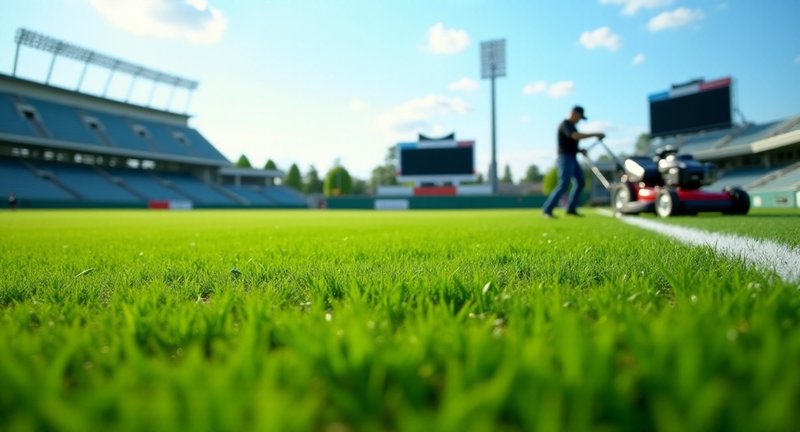
Soil Preparation for Optimal Growth
When I first took on the challenge of creating a vibrant baseball field grass, I quickly realized that soil preparation was the unsung hero of lush, green success. It’s almost like crafting a masterpiece; every layer of soil matters.
To start, I dug deep literally! I remember feeling the cool earth beneath my hands, a reminder that great things grow from solid foundations. A good mix of sand, silt, and clay creates the perfect texture, ensuring water drains properly while still retaining essential nutrients.
Next, I added organic matter, like compost, which transformed my dull soil into a nutrient-rich haven. Think of it as giving your soil a gourmet meal. This step is crucial for the lively greens that athletic turf demands.
Don’t forget to test the pH levels! My first attempt yielded lackluster results until I discovered that a slightly acidic environment is ideal for most grasses. Adjusting the pH can feel like fine-tuning a musical instrument, ensuring every note every blade of grass grows in harmony.
Also, a good aeration process followed by rolling the surface helped set the stage for the grass seeds. I still recall the satisfying crunch of the roller against the soil, almost like sealing a promise for future growth. With patience and care, my field flourished, becoming a beautiful expanse of baseball diamond lawn ready to embrace those summer games.
Maintenance Practices for Longevity
Maintaining the lush green expanse of your favorite outdoor hobby space can be a rewarding journey. It’s like nurturing a living canvas that evolves with every season.
First off, regular mowing is essential. I’ve found that cutting it at the right height promotes healthy growth, just like a well-timed haircut makes us feel fresh. Keeping those blades sharp ensures a clean cut, which prevents stress to the grass.
Watering is another crucial practice. You don’t want to drown your turf, but a deep soak encourages those roots to dig down deep. I usually water early in the morning; it feels like giving the grass a refreshing wake-up call before the sun gets too harsh.
Fertilizing is where the magic truly happens. Using organic fertilizers has transformed my green patch into a vibrant oasis. It’s fascinating to see how a little nourishment can bring out the rich hues of green.
Aeration is often overlooked, but it’s vital. Poking holes in the ground allows air, water, and nutrients to reach the roots more effectively. When I aerate, I can almost hear the grass taking a deep breath!
Also, don’t forget about pest control. Natural remedies can keep those pesky invaders at bay while being gentle on your landscape. It’s all about balance; you want to enjoy your space without inviting unwelcome guests.
With these practices, you’ll find that your outdoor hobby space thrives, bringing you joy for years to come.
Cost Comparison of Different Grasses
When diving into the world of grass varieties for recreational spaces, cost comparison becomes a fascinating yet crucial task. From lush emerald expanses to durable play surfaces, each type of grass has its unique price point and characteristics. Here’s my take on what to consider:
Factors Influencing Cost
-
Type of Grass:
- Some grasses thrive under pressure and are worth the investment, while others might leave your wallet feeling light without offering much in return.
- Common contenders include cool-season grasses and warm-season options. The former often requires more maintenance but can be more resilient in specific climates.
-
Maintenance Needs:
- Consider the ongoing costs like watering, mowing, and fertilization.
- For example, a grass that demands frequent watering will add to your monthly bills.
-
Installation Expenses:
- Don’t forget about the upfront installation costs, which can vary greatly depending on whether you’re opting for sod, seed, or a hybrid approach.
- Sod might have a higher initial cost, but the immediate payoff of a green landscape is hard to beat.
Cost Overview
- Hybrid Grasses: Often blend durability and appearance, averaging $1.50 to $3.00 per square foot.
- Traditional Turf: Generally falls in the range of $0.50 to $2.00 per square foot but can require more care.
- Eco-Friendly Varieties: A growing trend, these can range from $0.75 to $2.50, depending on the grass mix and sustainability practices.
In my experience, it’s about balancing your budget with the aesthetic and functional goals of your space. Trust me; investing wisely in the right type of grass can turn your backyard or any play area into a verdant paradise.
Popular Grass Varieties for Baseball Fields
In the context of creating that perfect playing surface for America’s favorite pastime, the choice of grass is as crucial as the game strategy itself. Having spent countless afternoons at the ballpark, I’ve come to appreciate the beauty and functionality of various grass varieties. Here’s a closer look at some of the top contenders:
-
Perennial Ryegrass
- Quick Germination: It springs to life rapidly, making it a favorite for overseeding.
- Vibrant Color: Its rich green hue provides that lush appearance that makes fields visually stunning.
- Durable Nature: Tolerates heavy foot traffic, perfect for those intense summer games.
-
Bermudagrass
- Heat Lover: Thrives in warm climates, making it ideal for southern fields.
- Aggressive Growth: It spreads quickly, filling in bare spots faster than you can say “home run.”
- Low Maintenance: Once established, it requires minimal upkeep, leaving you more time for the game.
-
Tall Fescue
- Drought Resistance: This variety stands tall in dry conditions, ensuring your field stays green even during dry spells.
- Deep Roots: Its extensive root system helps with soil stability and moisture retention.
- Versatility: Can adapt to a range of climates, making it a solid choice across different regions.
-
Kentucky Bluegrass
- Luxurious Feel: Its soft texture feels great underfoot, adding comfort for players.
- Rich Color: Provides a stunning backdrop for those action shots and highlight reels.
- Self-Repairing: Its rhizomatic growth means it fills in gaps on its own, keeping your field looking flawless.
In my experience, selecting the right grass variety isn’t just about aesthetics; it’s about creating a resilient, playable surface that holds up to the rigors of the game. So, whether you’re tending to a community field or a professional stadium, these grass types are worth considering. Happy turfing!
Seed Selection Tips for New Fields
Regarding selecting seeds for new fields, the journey is both exciting and a bit daunting. I remember when I first started; the sheer variety of options left me dizzy! Here are some practical tips that I wish someone had shared with me:
1. Know Your Environment
- Climate: Consider the temperature extremes and rainfall patterns. Some seeds thrive in heat, while others prefer cooler climes.
- Soil Type: Test your soil to determine its pH and nutrient levels. This knowledge will guide you toward seeds that will flourish in your specific conditions.
2. Define Your Purpose
- Aesthetic vs. Functionality: Are you looking to create a stunning visual landscape or a durable playing surface? Your goal will influence your seed choice.
- Maintenance Level: Some varieties require more care than others. If you’re short on time, opt for low-maintenance options.
3. Research Varieties
- Native Species: They often adapt better and require less water and fertilizer. Plus, they’re great for local wildlife!
- Disease Resistance: Look for seeds bred to withstand common pests and diseases in your area. This will save you headaches down the line.
4. Timing is Key
- Seasonal Planting: Different seeds have optimal planting times. Research when to sow for the best chance of success.
5. Consult with Experts
- Local Garden Centers: Don’t hesitate to ask for advice. The folks there can offer valuable insights tailored to your area.
Embarking on this seed selection adventure is just the beginning of creating a thriving field. With a little research and a sprinkle of patience, you’ll be well on your way to success!
The Role of Drainage in Grass Health
When dealing with grass health, drainage plays a starring role. I’ve seen firsthand how poor drainage can turn a vibrant green space into a soggy, sad mess.
Imagine stepping onto a field that feels more like a sponge than a well-maintained lawn. That’s often the result of water pooling instead of soaking into the soil. Good drainage helps roots breathe and allows nutrients to reach them effectively.
In my experience, the difference is night and day. A well-drained area thrives, while one that holds water can lead to disease and uneven growth. It’s like nurturing a plant; give it the right conditions, and it flourishes.
I remember transforming a patch of struggling grass into a lush carpet by improving the drainage. A bit of aeration, a few strategically placed trenches, and voila! The grass started to breathe, soaking up just the right amount of moisture.
As you consider your own grassy oasis, think about how water flows. Does it drain away or linger? The answer could determine whether your grass is a stunning emerald delight or a patchy, uninspired landscape.
So, let’s embrace drainage as a vital ally in our quest for green glory. With the right approach, you can elevate your space and enjoy the beauty of healthy grass all season long.
How to Handle Wear and Tear
Wear and tear – it’s inevitable, right? Especially when you’ve got a hobby that requires physical gear or equipment. Whether you’re out on the field or at the workbench, taking care of your tools ensures they last longer and perform at their best.
From my experience, here’s how you can tackle wear and tear like a pro:
-
Routine Checks: Think of it like a quick tune-up. Before and after every session, take a minute to inspect your equipment. Look for fraying edges, cracks, or weak spots. A stitch in time saves nine, as they say.
-
Proper Storage: Where you keep your gear matters. Leaving items exposed to heat, moisture, or direct sunlight can speed up the aging process. For example, I’ve learned the hard way that even something as simple as leaving equipment in the car can lead to faster degradation.
-
Cleaning: Dirt, sweat, and grime are like silent destroyers. A gentle clean after each use helps prevent buildup that can cause long-term damage. Sometimes, it’s as simple as wiping things down with a cloth, but for tougher jobs, a soft brush or special cleaner may be needed.
-
Repairs When Needed: Don’t wait until something’s totally broken. I’ve learned that fixing minor issues – tightening screws, replacing worn grips – can prevent much bigger problems down the line.
-
Know When It’s Time to Replace: As a matter of fact, there’s no shame in retiring an old favorite when its time has come. Better to replace a well-loved tool than risk poor performance or, worse, injury.
By following these simple steps, you’ll get more life out of your hobby gear. Trust me, the effort pays off.
Helpful Information
What kind of grass is on baseball fields?
Most baseball fields use a combination of cool-season grasses such as Kentucky Bluegrass, Perennial Ryegrass, or Bermuda grass, depending on the climate of the region. These grasses are chosen for their durability, ability to handle wear, and resilience in recovering from heavy traffic. In colder climates, Kentucky Bluegrass is a popular choice, while Bermuda grass is preferred in warmer regions due to its heat tolerance.
Do baseball fields use real grass?
Yes, many professional baseball fields, including those in Major League Baseball (MLB), use real grass. Real grass provides a natural playing surface that many players prefer because it offers better ball movement, reduces injuries, and enhances the game experience. However, some stadiums use artificial turf, especially in areas where maintaining natural grass is difficult due to weather conditions.
What is the best turf for a baseball field?
The best turf for a baseball field depends on the local climate and usage frequency. In warmer climates, Bermuda grass is often considered the best choice due to its excellent heat and drought tolerance. For cooler areas, Kentucky Bluegrass or a mix of Perennial Ryegrass is preferred for its resilience and ability to withstand heavy traffic. Hybrid grasses combining durability and aesthetic quality are also becoming popular.
What kind of grass is at Dodgers Stadium?
Dodgers Stadium in Los Angeles uses a blend of Bermuda grass and Perennial Ryegrass. This combination offers durability during the warm California summers, while the Ryegrass helps maintain a vibrant green appearance throughout the cooler months. The grass at Dodgers Stadium is meticulously maintained to ensure a consistent playing surface for professional athletes.
What kind of grass do they use at Yankee Stadium?
Yankee Stadium uses Kentucky Bluegrass for its field. This grass is highly regarded for its lush, deep green color and durability, which is crucial for maintaining the pristine condition of the field during a long MLB season. Kentucky Bluegrass is a popular choice for Northern stadiums because it thrives in cooler temperatures and offers a smooth, consistent surface.
What grass do the Phillies use?
The Philadelphia Phillies at Citizens Bank Park use Kentucky Bluegrass for their field. Kentucky Bluegrass is known for its ability to handle heavy foot traffic and provide a resilient, attractive playing surface. The grounds crew ensures the field stays in optimal condition with regular maintenance, including mowing, watering, and aeration.
What MLB teams have fake grass?
Several MLB teams use artificial turf, particularly those with indoor stadiums or locations where maintaining natural grass is difficult. Teams like the Toronto Blue Jays (Rogers Centre), Tampa Bay Rays (Tropicana Field), and Miami Marlins (loanDepot Park) use synthetic turf. Artificial turf offers lower maintenance but has different ball movement and can increase the risk of player injuries compared to natural grass.
Do baseball players prefer grass or turf?
Most baseball players prefer playing on natural grass over artificial turf. Grass provides a softer surface, reducing the impact on joints and muscles, which helps prevent injuries. The ball also behaves more naturally on grass, with smoother, more predictable bounces. Turf, while more durable and easier to maintain, can cause the ball to bounce faster and higher, making fielding more challenging.
What is baseball turf made of?
Baseball turf is typically made of synthetic materials, often a combination of polyethylene or polypropylene fibers designed to mimic natural grass. These fibers are supported by an infill, usually made of rubber pellets or sand, to provide cushioning and stability. Modern artificial turf systems aim to offer a more natural feel than earlier versions, with better drainage and shock absorption.
What do they use to mow baseball fields?
Professional grounds crews use specialized reel mowers to cut the grass on baseball fields. These mowers offer precise cutting to maintain a consistent height, which is crucial for the playability of the field. Reel mowers provide a cleaner cut compared to rotary mowers, reducing stress on the grass and ensuring a smoother surface. Mowing patterns, such as checkerboard designs, are often used to enhance the aesthetic appeal of the field.
What type of grass is used on athletic fields?
Common grasses used on athletic fields include Kentucky Bluegrass, Bermuda grass, and Perennial Ryegrass, depending on the climate and sport. These grasses are selected for their ability to recover quickly from wear, their resilience under foot traffic, and their capacity to maintain an even surface. Hybrid varieties and turf mixes are also used to combine the best traits of different grass species for durability and aesthetics.
How do I make my lawn look like a baseball field?
To achieve a baseball field-like lawn, start by choosing the right grass for your climate, such as Kentucky Bluegrass or Bermuda grass. Mow the grass regularly, keeping it at a consistent height, and consider using a reel mower for a professional finish. Water deeply but infrequently to encourage deep root growth, and fertilize to keep the grass lush and green. Aerate and overseed your lawn to ensure even coverage, and use a striping kit on your mower to create the signature ballpark mowing patterns.



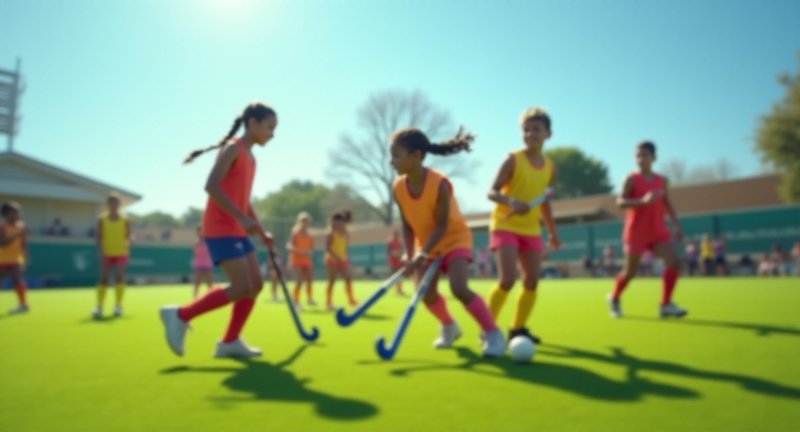




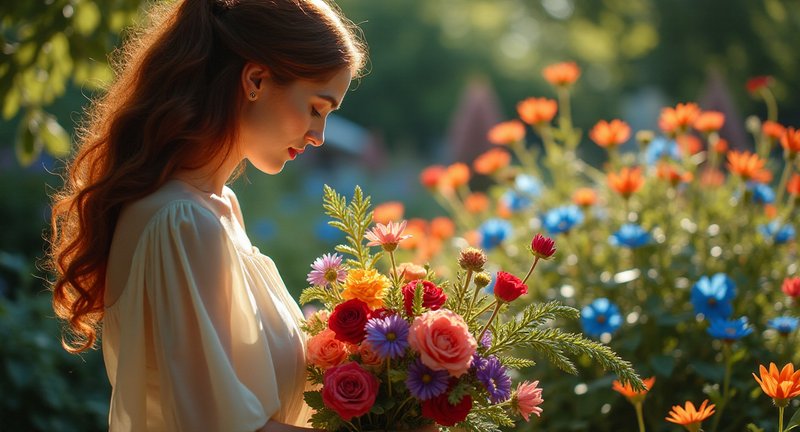


Oh, I know that feeling of getting your hands dirty in the soil – there’s nothing quite like it! The way you described preparing the soil as the foundation for a vibrant field really resonated with me. It’s like painting a picture, starting from scratch and building up layers. I had to laugh when you mentioned pH testing. I’ve learned that lesson the hard way myself – nothing like a poor pH balance to throw off all your hard work. Compost and aeration are my go-tos as well. Loved this post, and it’s making me want to head out to the field and get to work!
I never realized how much science goes into turf maintenance! The breakdown of species selection and soil health is spot on. I’ve always been fascinated by how resilient Bermudagrass is, especially with its ability to bounce back after heavy use. I’m glad you mentioned aeration, too. It’s a game-changer for keeping the roots healthy and the field looking pristine. Regular mowing definitely helps with that lush, dense appearance, and who doesn’t love a perfectly maintained field? Thanks for the detailed insights – it’s making me appreciate the green under my feet even more!
I totally agree with you about the importance of climate when choosing the right grass. I had a similar experience when I first tried growing Bermuda grass up in a cooler climate – let’s just say it didn’t go well! After that, I learned to respect what the local climate demands. Bermuda might be fantastic in warm, sunny areas, but Kentucky bluegrass has been my go-to since then in chillier spots. It’s amazing how adaptable the right grass variety can be once you understand the environment you’re working with. I’ve even noticed how much of a difference soil composition makes, especially when you’re dealing with different moisture levels. Fescue grass saved me in a rainy season once – didn’t drown at all! This post hit home for me, especially the part about thinking of it like picking the right pair of shoes for the land. Definitely bookmarking this for future reference. Love the practical tips!
You’re so right about how overwhelming it can be to pick the right turf there are so many factors to think about! I live in a pretty hot area, so climate is definitely a big deal for me. One summer, I made the mistake of choosing a grass that couldn’t handle the heat, and I ended up with a sad, dried-up lawn that looked more like a desert than a yard! Also, foot traffic is key especially if you’ve got pets or kids running around all the time. Durability is non-negotiable. And the maintenance side of things… let’s just say I’m not trying to babysit my grass! A turf that requires constant attention isn’t going to cut it in my world. Aesthetic appeal matters too; who doesn’t love the look of a fresh, green lawn? You’ve summed it up perfectly balancing all these factors is like a mini adventure. When you get it right, it makes all the difference!
Wow, this really nails the pros and cons of natural versus synthetic! I completely agree about the therapeutic feel of natural grass it’s not something you can easily replicate with synthetic turf. That feeling of real grass under your feet is one of the best parts of being outside, no doubt! That said, I can totally see why people go for synthetic, especially if you’re low on time or space. My cousin just switched to artificial in his yard, and I have to admit, it looks pretty fantastic all year round, no muddy patches or bald spots. Plus, no mowing! But for me, the environmental benefits of natural grass win hands down. I love that it supports wildlife and gives back to the ecosystem in small but significant ways. At the end of the day, it’s all about balance what works for one person might not for another, and that’s what makes these choices so personal.
This breakdown of different grass types is exactly what I needed! As someone who has spent too many weekends researching what to plant for my backyard sports area, I appreciate how clear this is. Bermudagrass sounds like a real winner for the sunny spots I’ve been dealing with, and the fact that it’s quick to recover is such a bonus especially when you’ve got kids running around. I’ve always been intrigued by Kentucky Bluegrass too because of that rich color, but knowing it takes a bit longer to establish makes me rethink it for my situation. And don’t even get me started on Zoysiagrass! Patience might be a virtue, but it sounds like it would test mine for sure! I love how this really emphasizes that the grass isn’t just about how it looks it’s about creating the right atmosphere and playability. Thanks for making the decision process a little easier!
Artificial turf is a real game-changer, no doubt. I remember the first time I played on it – I was amazed at how smooth and consistent it felt. You’re right about the durability, too. Our local field switched to turf a few years ago, and the difference in how often we could use it, rain or shine, was amazing. Plus, the fact that it’s more eco-friendly now is a huge bonus. The maintenance is so much easier compared to natural grass – no more spending hours cutting and treating the field. It’s a great investment for any venue that wants to keep things looking fresh and functional year-round.
Totally agree about the role the turf plays in the game experience! I always felt that a well-maintained field makes a huge difference. It’s almost like an unsung hero in every baseball game. When the ground feels solid, it’s easier to stay focused on the game instead of worrying about footing.
I couldn’t agree more with your points on maintaining baseball field grass. I spent a few summers helping maintain our local ballpark, and getting the grass just right was always a satisfying challenge. I found that aerating the field, like you mentioned, was one of the most overlooked but crucial steps. Once we started doing it regularly, the improvement was noticeable – the grass looked healthier and the field felt better to play on. The tip about watering early in the morning is spot on too! It not only strengthens the roots but also helps avoid those annoying fungus problems that can happen when you water too late. I also like how you touched on weed control – proactive is definitely the way to go. There’s nothing worse than seeing a dandelion pop up in the outfield right before a game. Great insights here!